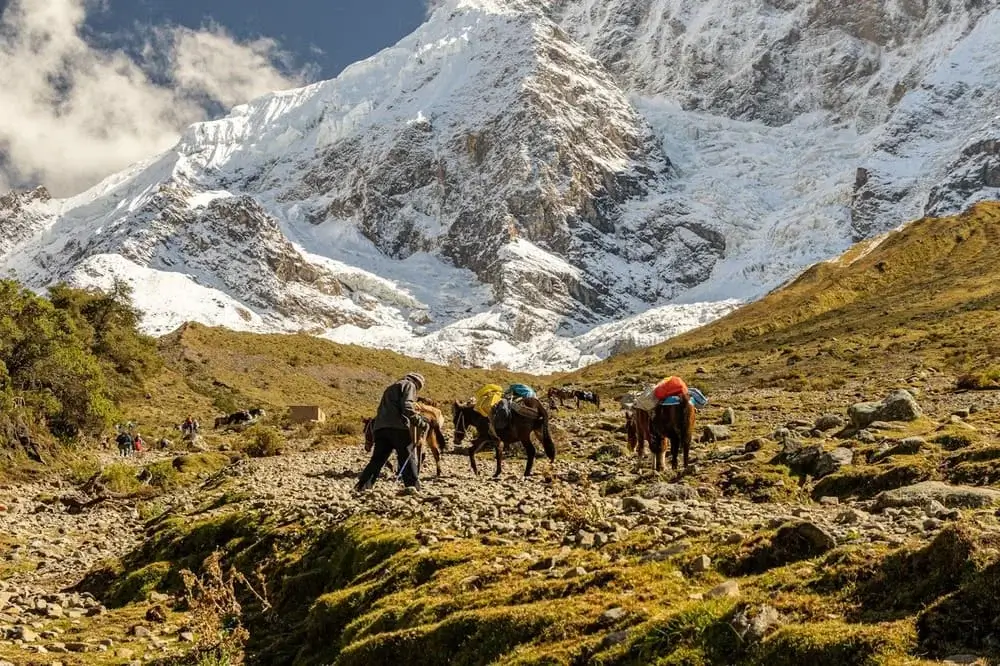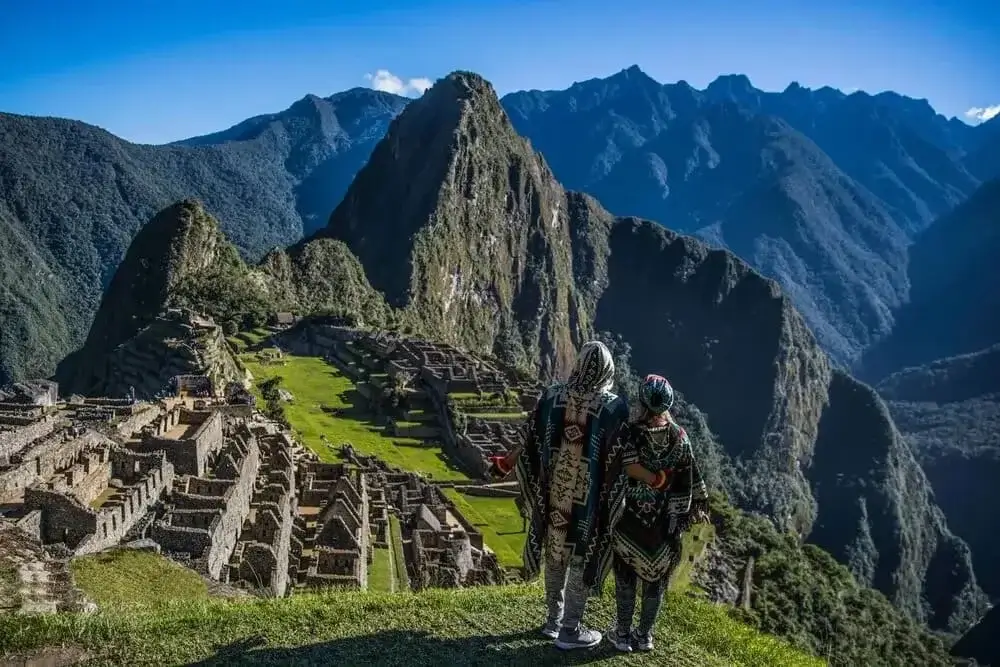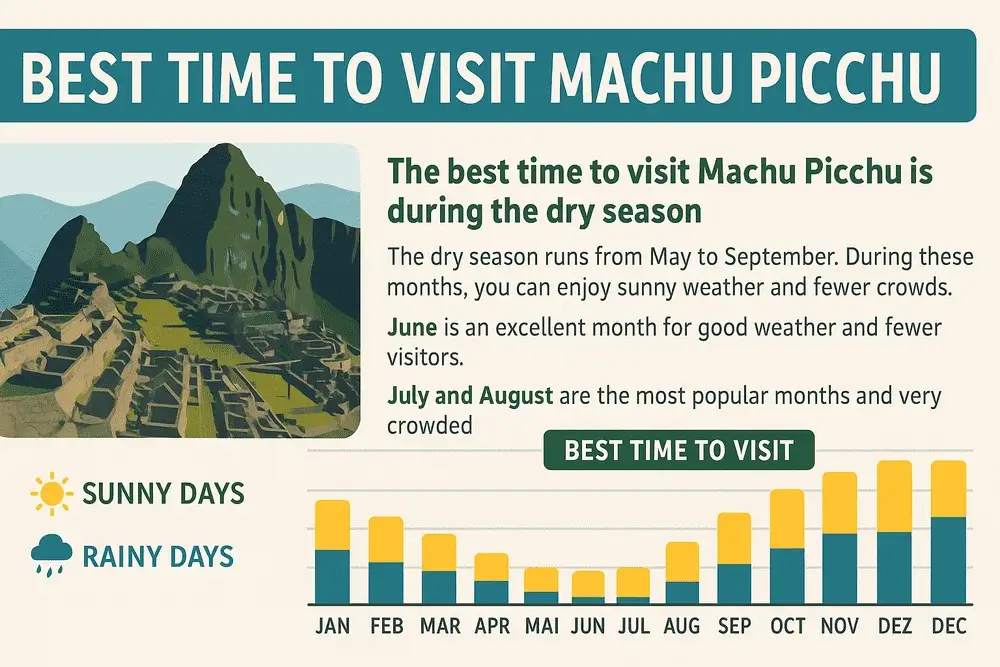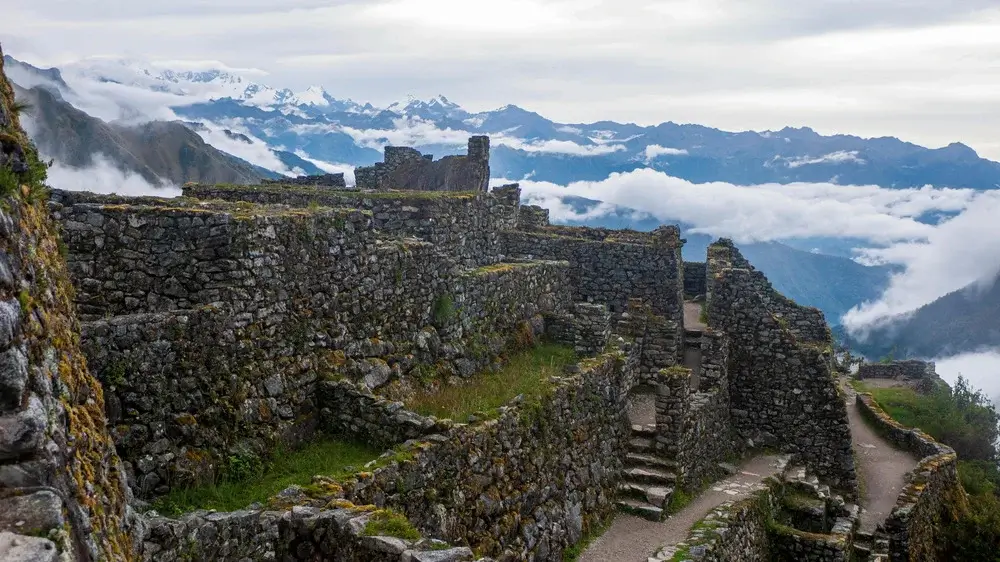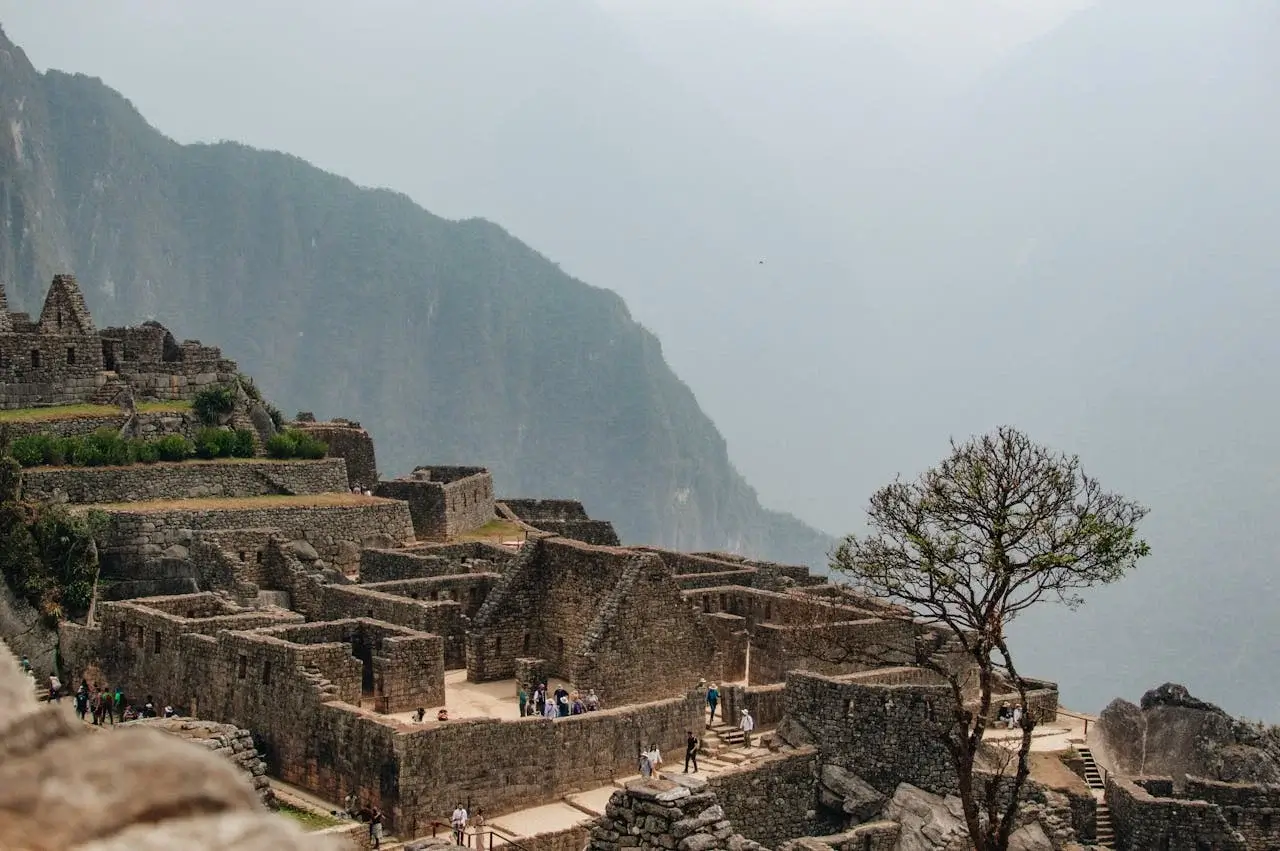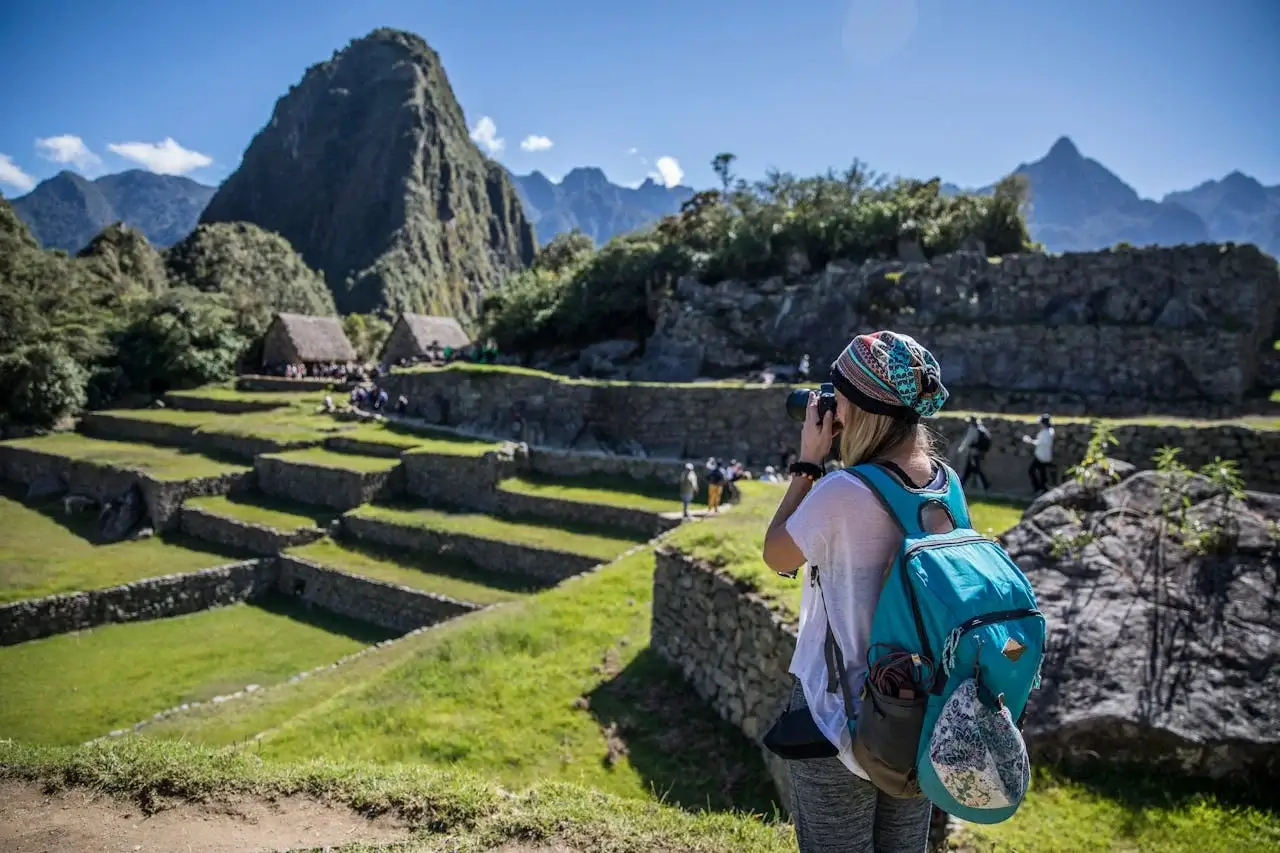Exploring the ancient ruins of Machu Picchu is a dream for many travelers, an experience that transcends time and transports those who visit to a lost world of archaeological wonders and natural beauty. However, to make the most of this incredible adventure, it is crucial to choose the right time for your trip.
Machu Picchu is a dream destination for many, whether you're an experienced adventurer seeking to conquer the Inca Trail or a family eager to explore the mysteries of the Sacred Valley. The ancient ruins, perched high in the Peruvian Andes, offer an unparalleled connection to history, culture, and nature. However, the best time to visit Machu Picchu can make a world of difference in your experience.
Whether you're after perfect weather, fewer crowds, or the ultimate trekking conditions, understanding the seasonal patterns is key. In this blog, we will help you discover the best time to visit Machu Picchu and which is the best month to visit Machu Picchu, considering factors such as the weather, how many tourists are there, and local festivities. Get ready to discover how to plan an unforgettable visit to this World Heritage Site!
Why Timing Your Trip to Machu Picchu Matters
Cusco Peru Weather
The climate in Cusco is characterized by two main seasons: the rainy season and the dry season.
Rainy Season
The rainy season in Cusco starts in mid-November and lasts until the end of April. During these months, the region experiences frequent rainfall, especially heavy in January and February. Temperatures are warmer, with daily averages between 12°C and 18°C. Although rains can cause landslides and close some trekking routes, the vegetation is lusher and the scenery is spectacular
Dry Season
The dry season in Cusco starts in May and lasts until mid-November. The months of June and July represent the high season, as Cusco has several festivities during this time. During the dry season, rainfall is rare, and days are predominantly sunny. Daytime temperatures can reach up to 20°C, but at night they can drop to 0°C, so it is important to pack layered clothing. This is the best time for outdoor activities and trekking due to the stable weather conditions and clear views
When is the Best Time to Visit Machu Picchu?
High tourism Season in Machu Picchu, Peru (June to August)
The high season in Peru coincides with the dry season in the Andean region. This is the best time to visit destinations such as Machu Picchu, Cusco, and the Inca Trail. The weather is more predictable, with clear skies and less rain, making hiking and other outdoor activities easier. However, this is also the busiest period; prices can be higher, and tickets to Machu Picchu are limited and can sell out quickly, so it is advisable to book in advance.
Events and festivities during the High Season
Inti Raymi (June 24): Inti Raymi, or the Feast of the Sun, is one of the most important celebrations of the Inca calendar. Cusco hosts ancient religious ceremonies in honor of the sun god, Inti. The event includes parades, music, dances, and rituals on the Sacsayhuaman esplanade, attracting thousands of tourists and locals.
Fiestas Patrias (July 28 and 29): Fiestas Patrias commemorate Peru's independence. The capital, Lima, hosts military parades, official ceremonies, and festivities throughout the city. Celebrations include concerts, fireworks, and cultural activities throughout the country, offering an excellent opportunity to experience Peruvian culture.
Mid-season in Machu Picchu, Peru (April to May and September to October)
The middle season in Peru, during April and October, is a period of transition between the rainy and dry season. It offers a pleasant weather, with less rainfall than during the rainy season and fewer crowds than in the high season. These months are ideal for those who prefer moderate temperatures and a quieter atmosphere. It is a perfect time to visit the country, enjoy its landscapes, and explore its attractions without the crowds of tourists.
However, it is important to keep in mind that the weather in the Andes can be unpredictable, even during the so-called dry season. Therefore, it is advisable to prepare for various weather conditions and bring appropriate clothing, particularly for hiking and outdoor exploration.
Dry Season (April to October) – The Ideal Time for Clear Views
- Weather: The dry season offers clear skies, warm days, and cool nights—perfect for exploring the ruins and trekking the Inca Trail. Temperatures typically range from 12°C (54°F) in the early morning to 24°C (75°F) during the day. This is when you'll get the best views of Machu Picchu, as rain is rare.
- Crowds: Expect the highest number of visitors, particularly during June, July, and August. While this means a vibrant atmosphere, it also means crowded sites. If you prefer fewer crowds, consider visiting during shoulder months, like April, May, or September.
Why Visit in the Dry Season:
- Ideal for outdoor activities such as trekking and hiking
- Reliable weather conditions with minimal rain
- Best views of Machu Picchu and surrounding landscapes
- Perfect for photography
Low tourism Season in Machu Picchu, Peru (November to March)
The low season includes the rainy season, especially in the Andes and the Amazon. During this time, the weather in the region tends to be wetter and more unpredictable, with frequent showers and a greater likelihood of dense fog, especially in the morning and late afternoon. Fogs can cover the landscape and obscure the view of the ruins, detracting from the experience.
Despite the risk of fog and rain, it is perfectly possible to visit Machu Picchu during the rainy season. During this time, many people deliberately choose to visit the historic site to enjoy the lush green landscape. The ruins of Machu Picchu are breathtaking year-round and offer a unique experience regardless of the weather conditions.
As a result, it is critical for visitors to Machu Picchu during the rainy season to prepare for these conditions. Bring waterproof clothing and appropriate footwear, as well as rain gear, to have the best possible experience.
Advantages of Low-Season Travel
Discounts and Offers: Many hotels, airlines, and tour operators offer reduced rates during these months. This is ideal for travelers on a tighter budget.
Fewer Crowds: During the low season, popular tourist sites such as Machu Picchu, the Sacred Valley, and the Nazca Lines are less crowded, allowing for a more intimate and relaxed experience.
Local Festivities: Participating in lesser-known cusco festivals, such as Semana Santa, can provide a more authentic view of local culture. In many regions, Semana Santa is celebrated with processions, music, and traditional events that showcase devotion and community spirit.
Rainy Season (November to March) – For a More Serene Experience
- Weather: The rainy season can bring heavy showers, high humidity, and cloudy skies. However, it’s also when the region is lush and green. Expect temperatures between 15°C (59°F) and 23°C (73°F) with frequent rain, especially in the afternoons.
- Crowds: Fewer tourists visit during these months, making it the perfect time for those who want a more tranquil experience away from the crowds.
Why Visit in the Rainy Season:
- Fewer crowds and a more peaceful experience
- Lush green landscapes
- Lower hotel prices and trekking costs
Important Considerations:
- The Inca Trail is closed for maintenance in February, so alternative routes like the Salkantay Trek or Lares Trek are available.
- Rain can make trekking more challenging, so prepare for muddy trails and possible delays.
Choosing the Right Season for Your Travel Style
Your ideal time to visit Machu Picchu depends on your personal travel preferences and the type of experience you seek.
For Adventure Seekers – The Dry Season is Your Best Bet
The dry season is ideal if you want to hike the Inca Trail or discover Machu Picchu's lesser-known nooks. This time of year provides the ideal circumstances for hiking at high elevations because of the clear skies, steady weather, and less chance of rain-related trail closures.
Top Treks During the Dry Season:
- Inca Trail: Experience the iconic 4-day trek through ancient Inca paths.
- Salkantay Trek: A challenging alternative trek with stunning views of snow-capped mountains.
- Lares Trek: A less crowded route that offers a blend of nature and cultural immersion.
For Families – The Shoulder Months (April, May, September)
During the dry season's shoulder months, families frequently choose to travel. You may still take advantage of the pleasant weather and have a more laid-back experience because there aren't as many people as during the busiest summer months.
Why Shoulder Months?
- Less crowded than June, July, and August
- Weather is still relatively dry and mild
- Great for younger travelers who need a less intense trekking experience
For a Unique Experience – The Rainy Season
A very different view of Machu Picchu can be had during the rainy season for those looking for a more sedate, off-the-beaten-path experience. The surrounding area is lush and colorful, and the hazy ruins are surrounded by a mysterious aura. But this calls for more thorough planning and adaptability in your strategies.
Tips for Planning Your Trip to Machu Picchu
Book in Advance
- Machu Picchu and the Inca Trail are popular, so it’s essential to book your tickets well in advance, especially during the peak season (April to October). Permit restrictions on the Inca Trail limit the number of trekkers per day, so securing your spot months ahead is highly recommended.
Pack for the Weather
- Dry Season: Light, breathable clothing, sunglasses, and sunblock.
- Rainy Season: Waterproof gear, including ponchos and shoes with good traction, as the trails can be slippery.
Arrive Early to Beat the Crowds
- Machu Picchu opens at 6 AM, and getting there early will help you avoid the crowds and experience the site in its quietest and most serene state.
Best Time to Visit Machu Picchu for Photography
- The best time for photography depends largely on the weather conditions:
- Morning light (early dry season): Early mornings, especially in the dry season, offer soft, golden light, perfect for capturing the ruins in their full glory.
- Lush green landscapes (rainy season): If you prefer vibrant greenery and dramatic cloud cover, visiting during the rainy season can offer unique and atmospheric shots.
What to Do Around Machu Picchu
Although Machu Picchu is the primary attraction, there are other thrilling things to do in the Sacred Valley and the town of Aguas Calientes. Think about including these on your itinerary:
- Sacred Valley: Visit the nearby archaeological sites of Ollantaytambo, Pisac, and Moray.
- Machu Picchu Mountain or Huayna Picchu Hike: For panoramic views of the ruins.
- Hot Springs in Aguas Calientes: Relax after a day of exploring with a soak in natural thermal baths.
FAQs: Best Time to Visit Machu Picchu
When is the best time to visit Machu Picchu?
The best time to visit Machu Picchu is during the dry season, from May to September. During these months, the weather is generally sunny, the skies are clear, and the trails are in excellent condition for trekking.
2. What is the weather like in Machu Picchu throughout the year?
Machu Picchu has two main seasons:
- Dry Season (May–September): Sunny days, cooler nights, and less rainfall — ideal for outdoor exploration.
- Rainy Season (October–April): Lush landscapes and fewer tourists, but frequent showers and occasional trail closures.
3. Which month offers the best balance between good weather and fewer crowds?
June is often considered the best month the weather is clear, and it’s slightly less crowded than July and August.
4. Can I visit Machu Picchu during the rainy season?
Yes! You can visit year-round. The rainy season (November–March) brings vibrant green scenery and smaller crowds. Just be prepared with waterproof gear and flexible plans.
5. Is Machu Picchu open all year round?
Yes, Machu Picchu is open every day of the year, including holidays. However, the Inca Trail is closed each February for maintenance, though alternative routes remain available.
6. What time of day is best to visit Machu Picchu?
The best time of day is early morning (6–8 a.m.) for sunrise views and fewer people, or late afternoon (after 2 p.m.) when crowds thin and lighting is perfect for photos.
7. How far in advance should I book tickets?
During peak season (May–September), it’s recommended to book tickets and train rides at least 2–3 months in advance, as daily entry limits can sell out quickly.
8. Is it worth visiting during the off-season?
Absolutely. Traveling from November to April means fewer tourists, lower prices, and more relaxed experiences though you may encounter some rain.
9. What should I pack depending on the season?
- Dry season: Sunscreen, light layers, a hat, and plenty of water.
- Rainy season: A waterproof jacket, hiking shoes, poncho, and quick-dry clothing.
10. Can I still hike the Inca Trail during the rainy season?
Yes, except in February when it’s closed. The trail is open the rest of the year, but be aware of slippery paths during heavy rains.
The ideal time of year to visit Machu Picchu ultimately depends on your personal travel choices, whether you're an adventurer, a family vacationer, or someone seeking solitude. You can arrange a trip that will give you the best possible experience at Machu Picchu by taking into account the weather, crowd density, and available activities
The best time to visit Machu Picchu depends on your preferences. You can enjoy the dry weather and lively festivities of the high season, or the lush landscapes and tranquility of the low season.
Regardless of when you visit, Machu Picchu offers something special year-round. With Andean Travel Experience , you'll have an unforgettable adventure tailored to your chosen season.
Contact us at Andean Travel Experience for personalized itineraries and tours to Machu Picchu. Our team of experts will help you select the best dates and routes, ensuring your trip is seamless and unforgettable.

